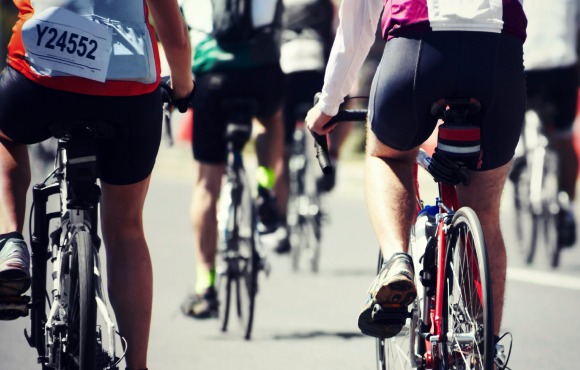Read the original article published on Bicycling.com.
Drop the Spare Spares
1 of 7
"Every extra pound you carry above [your ideal cycling] weight makes you 15- to 20-seconds slower for each mile of a climb," says Hunter Allen, founder of the Peaks Coaching Group and coauthor of "Training and Racing with a Power Meter."
That's why pros are so darn skinny. You may not be able to get down to your ideal cycling weight by tomorrow (or heck maybe ever, depending on your job, priorities, and desires), but you can still shed unnecessary bulk.
Carry the essential bike tools and supplies you need, of course. But ditch the old patched tube and rusty, ancient multi-tool and whatever else might be in that seat bag—and while you're at it, upgrade to a lighter strap system—that's weighing you down.
More: Bike Accidents: Blaming the Victims
Find
Cycling EventsUse Your Gears
2 of 7
No kidding, right? Right. Still, many riders sit and mash a mega-gear in the big ring way past the point of productivity.
Shift with your eyes as well as your legs—that is, when you see the hill kicking up, shift down to prepare for it so you can keep a comfortable spinning cadence of at least 70 rpm, rather than waiting until you find yourself mashing along slowly. Cranking heavy gears this way recruits too many fast-twitch muscle fibers, which fatigue quickly and can slow you to a crawl when they say 'uncle.'
Find
Cycling EventsBrace Your Core
3 of 7
The core muscles of your torso provide the platform from which your legs push off. They also help transfer power to your lower body when you pull on the bars.
To avoid losing power at this critical junction, lower your shoulders (to avoid tensing up), bend your elbows and tuck them close to your body, flatten your back, and lower your torso. You'll put more power into your pedal stroke without working harder.
More: 8 Habits Fast Cyclists Swear By
Find
Cycling EventsFlatten Your Feet
4 of 7
Your feet and ankles are much-overlooked resources of untapped (or worse, wasted) power when you climb, says Tim Pelot, CSCS, a strength and conditioning physiologist at the US Olympic Committee, who has corrected many a cyclist's pedal stroke.
"When you pedal with your toes pointed down you lose power through your calves," he says. "Push through the heels or the middle of the feet with your ankles locked to transfer maximum power." You can find climbing watts you didn't know you had just by changing the position of your feet.
Find
Cycling EventsSync Your Breathing With Your Pedal Stroke
5 of 7
There's power in your breathing. That's why those Olympic lifters inhale deeply as they lower a weight and exhale so forcefully when pressing those massive loads. You can apply the same principles to your pedal stroke.
On a gradual climb, inhale for three counts (down strokes), then exhale for two counts (down strokes). On steep climbs, you can switch to a three-count pattern, inhaling for two counts and exhaling for one count. This keeps your breathing even and helps deliver balanced power into both pedals all the way up the hill.
Find
Cycling EventsShift Your Weight
6 of 7
We tend to climb right at our lactate threshold, which means muscles fatigue more quickly. By periodically switching positions on the saddle, you can give the tired ones a breather while recruiting a fresher set.
To start, scoot back on the saddle to more fully engage your glutes. When you start to feel yourself fatiguing, scoot up toward the nose of the saddle to leverage more force from your quads. Click into a higher gear, get out of the saddle for a few seconds to stretch your legs, and start from the beginning.
Find
Cycling EventsAbout the Author








Discuss This Article